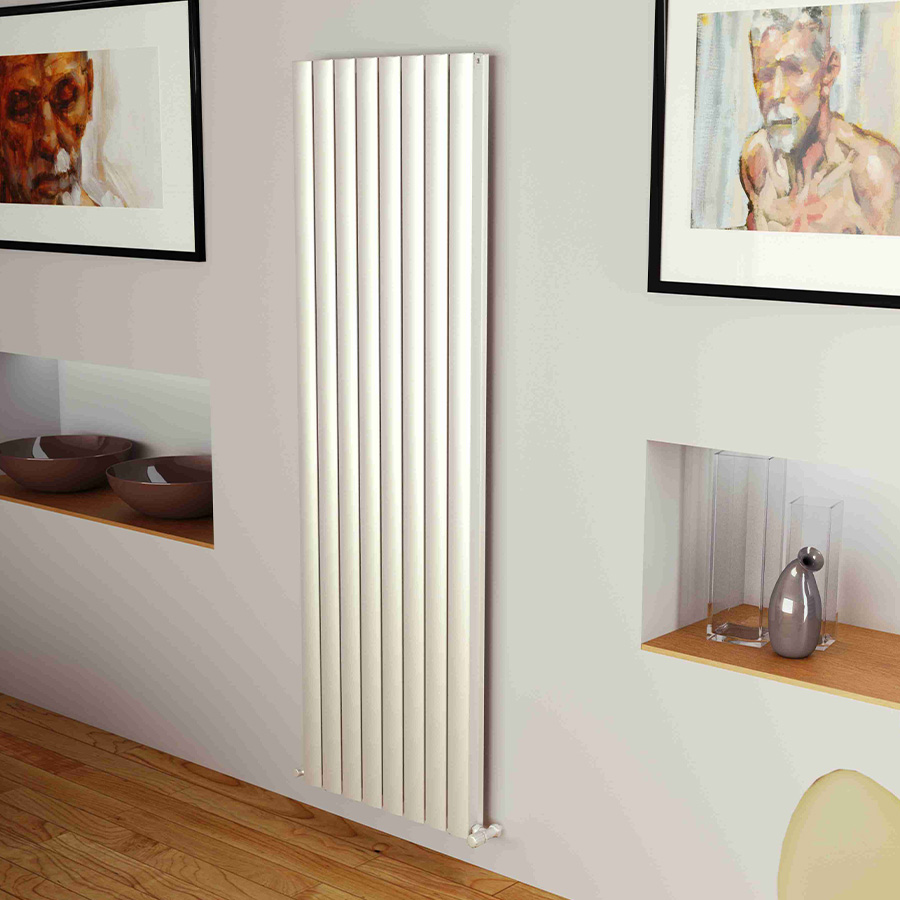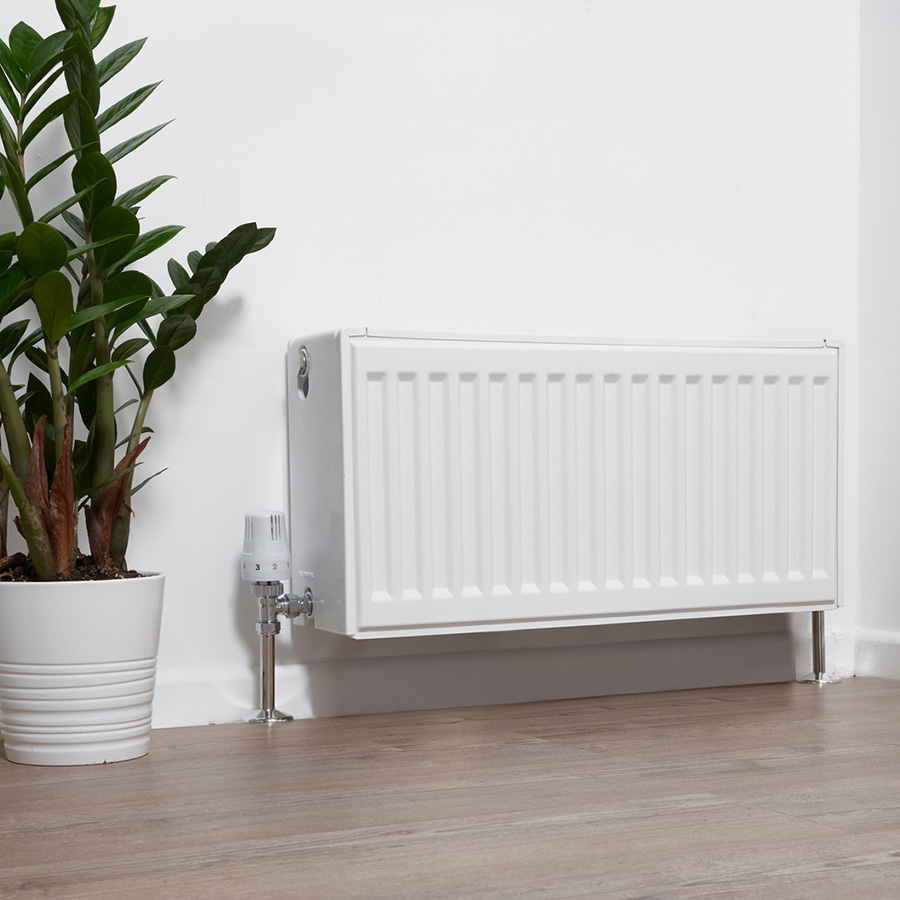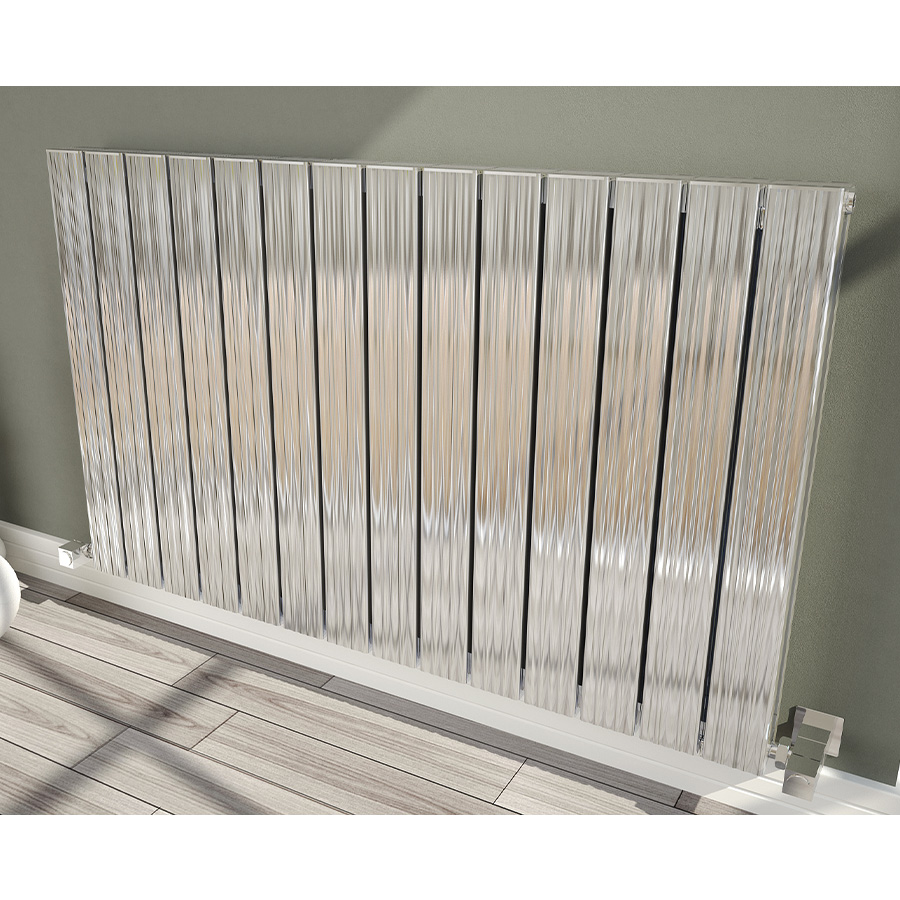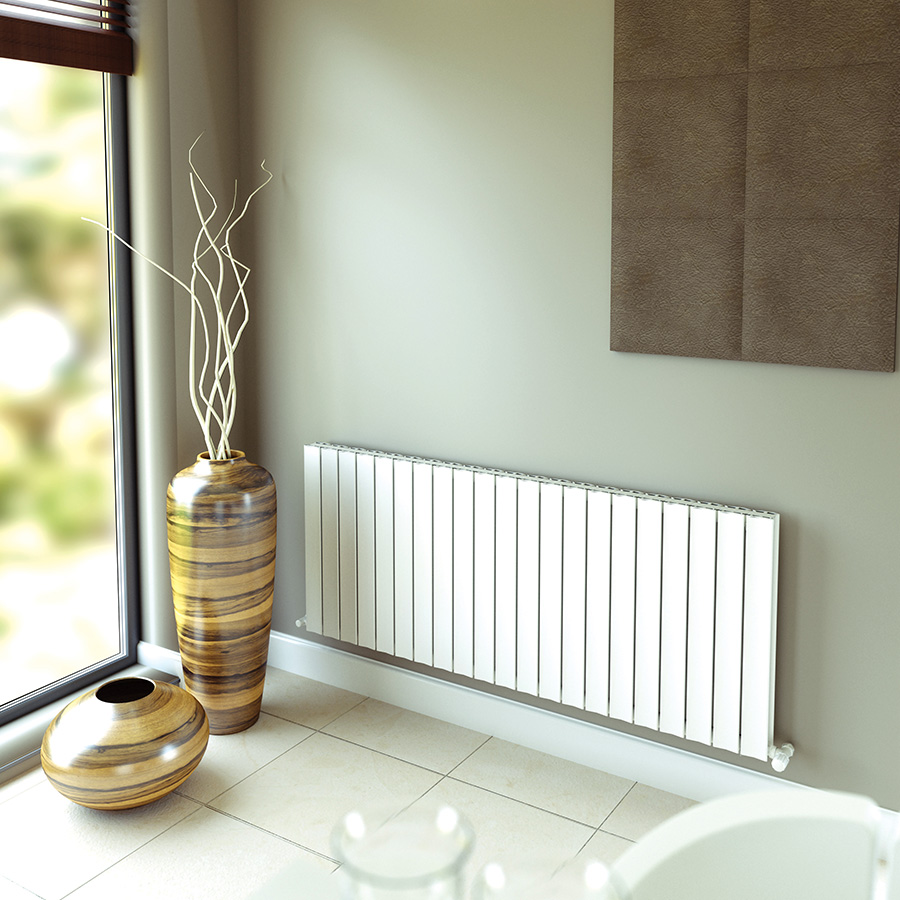Office spaces are becoming increasingly open-plan, and with the traditional office layout now replaced with remote and hybrid working styles, staff hot-desk or desk share. So achieving maximum efficiency from an office heating set-up is more paramount than ever.
Radiator Selection
In specifying heating solutions for offices, efficiency and speed of response should be prioritised. Convection heating solutions, even ‘efficient’ designs, will by their nature result in a floor temperature of 18°C, a mid-level, ambient temperature of 20-21°C, while the air by the ceiling will likely reach 24°C. This is in fact a waste of heat output, heating air to 24°C that is not felt in the ambient room temperature, which is exacerbated in open-plan spaces with high ceilings. In contrast, radiant heating, where heat is emitted outwards, the length and width of the radiator, provides a more uniform ambient temperature, and will therefore derive a greater value to the user from the heat output.

Sustainable Solutions
Commercial and office installations are also starting to adopt more sustainable heat sources, such as ground source heat pumps. These sources usually heat the system to lower temperatures, in the range 55°C as opposed to 70+°C, which will subsequently impact the heat output of any radiator connected to that system. For residences and small rooms, it’s possible to moderate this by choosing a radiator with a larger heat-emitting area, like a triple compact, but for large offices, this would require a very large volume of water through the system.
For offices, it is best to choose a radiant heating solution. These solutions only require a low volume of water, which in turn requires a smaller heat source, consuming less energy. They will also respond more quickly when attempting to reach a given temperature, which increases their efficiency.

MODEL SHOWN: 3TS600 (White RAL 9016) 
MODEL SHOWN: Argus ARG0614GA (Gloss Anodised) 
MODEL SHOWN: Luvre BLU621W (White RAL 9010)
Material Matters
Aluminium is a great choice for heating open office spaces. It is more conductive than steel, which translates into a higher, far more responsive heat output. Typically, an aluminium radiator requires 40% less water compared to a mild steel radiator of the same dimensions. While aluminium is more costly upfront, it offers clear benefits to efficiency, savings on energy costs, flexibility to migrate to greener heat sources, and, at end of life, a fully recyclable item. When choosing accessories for office setups, opt for gas-filled Thermostatic valves. While they need to be larger in size compared to liquid-filled TRVs, gas solutions are more sensitive and responsive, which will also serve to optimise the efficiency of the system.
Radiator Placement & Installation
In the office, heating solutions should also be placed with efficiency in mind. Under windows and next to doors are typically the most efficient sites, as these areas will offer the greatest air movement, to carry the heat across the space. Naturally, a window will be positioned on an external wall, which can act as a heat drain. Encourage installers to add a layer of aluminium heat reflector behind each radiator, to reflect heat back into the room.
As with any domestic installation, it is best to place a radiator away from furniture or obstructions, this allows heat to successfully travel and fill the room. Given the efficiency specifications advised above, it is also important to locate radiators away from desks, or narrow walkways where contact may occur. We advise against adding covers or boxing radiators for aesthetic reasons; this will reduce efficiency by up to 30%. If a box seems necessary for safety reasons, such as next to a seat, it is better to rethink the location entirely.
BUT don’t let existing pipework dictate the location of a heating solution; consider an electric radiator if this gives you a better layout and use of the space.
